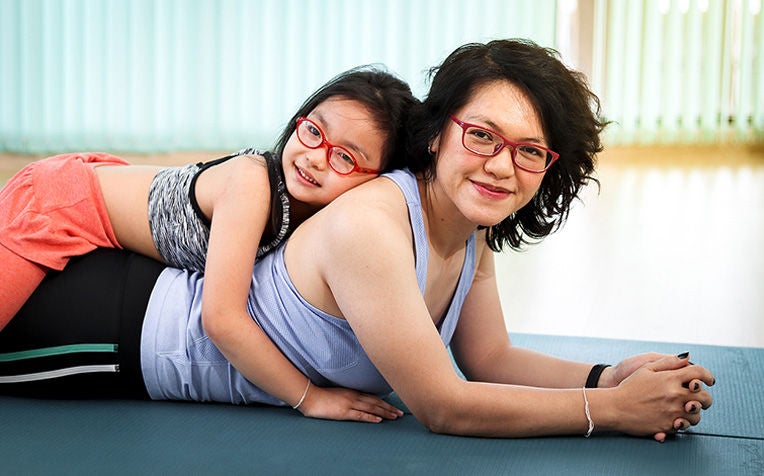
Lower limb strengthening exercises help to maintain and improve functional strength in the core muscles and lower limb joints. It also assists with overall circulation and encourages functional mobility.
Strengthening exercises are important to maintain and improve functional strength in the core muscles and the lower limb joints. It also assists with overall circulation and encourages functional mobility.
Safety precautions when exercising
Ensure that you had been taught the recommended exercises by a physiotherapist before carrying them out.
Ensure the child is near a supporting surface or an attentive adult during exercises especially balance activities.
Observe for signs of pain or discomfort – if pain occurs, stop and check in with your physiotherapist before continuing further.
Your exercise regime
![]() Repeat exercises
as recommended by your physiotherapist – check in with your therapist on the recommended number of sets per day
Repeat exercises
as recommended by your physiotherapist – check in with your therapist on the recommended number of sets per day
![]() Ensure adequate rest and hydration between sets
Ensure adequate rest and hydration between sets
Hip (active-assisted) exercises
Active-assisted bridging Aim: To strengthen the abdominals, hip muscles, and the muscles at back of the child’s thighs. Instructions: Position the child lying on their back. Push your hands against the child’s feet and encourage them to lift their hips off the bed. Ensure the child’s body is kept horizontal. Do 20 repetitions, each time holding for 10 seconds if possible | |
Assisted sit-to-stand Aim: To improve sit to stand quality and strengthen lower limbs. Instructions: Position the child sitting on a chair or block, crossing their arms across the chest. Giving tactile cues on the knees, instruct the child to stand without holding onto assistance. Do 20 repetitions | /assisted-sit-to-stand.jpg) |
Ref: K21
Check out other articles on seizure and epilepsy in children:
Epilepsy and Seizures: Causes, Types and How to Manage
Seizure and Epilepsy Action Plan
Epilepsy: Treatment and Diet Tips
Child Neurological Conditions: Care Tips Resource












/active-assisted-bridging.jpg)





 Get it on Google Play
Get it on Google Play